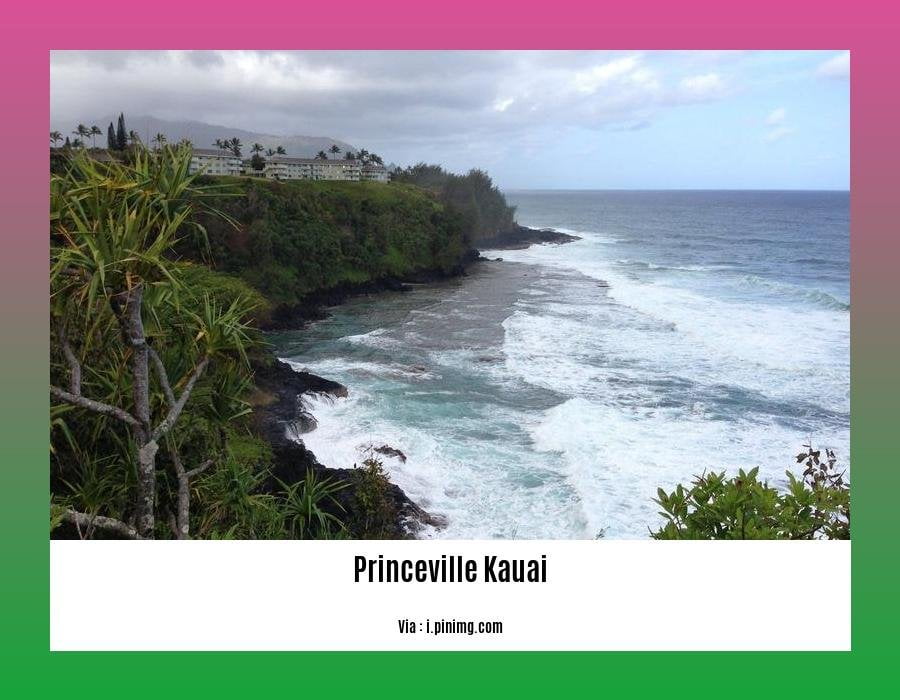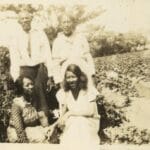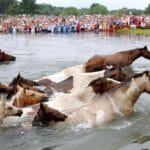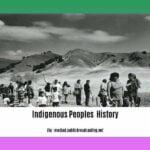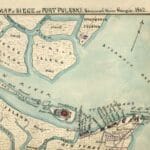Unveiling the Rich History of Princeville Kauai: Exploring the Roots, Influences, and Landmarks
Embark on an extraordinary journey through time as we delve into the captivating history of Princeville Kauai. This idyllic haven tucked away on the northern coast of the island carries with it a wealth of stories, waiting to be discovered and shared. From its indigenous beginnings to the colonial influences that shaped its development, Princeville has evolved into a vibrant community that proudly preserves its cultural heritage. Join us as we unveil the intriguing narratives behind its origins, explore the diverse influences that have shaped its identity, and uncover the hidden gems that make Princeville a truly remarkable destination. Whether you’re a history enthusiast or simply curious about the fascinating tales woven into the fabric of this enchanting place, this journey into Princeville’s past promises to leave you inspired and awestruck.
Key Takeaways:
- Princeville, a 9,000-acre community on the north shore of Kauai, was named after Prince Albert Kamehameha, son of King Kamehameha IV and Queen Emma, in 1860.
- It started as a coffee plantation, transitioned to sugarcane, and eventually became a cattle ranch.
- The Princeville Ranch, founded in 1853 by Robert Crichton Wyllie, was the oldest ranch on Kauai.
- The ranch was named Princeville following a visit by Kamehameha IV, Queen Emma, and their son.
- Princeville is a popular tourist destination with various attractions.
- The climate in Princeville is warm and tropical throughout the year.
- Sugarcane cultivation played a significant role in the culture and economy of Princeville.
- Princeville is approximately 120 miles away from Honolulu.
History of Princeville Kauai
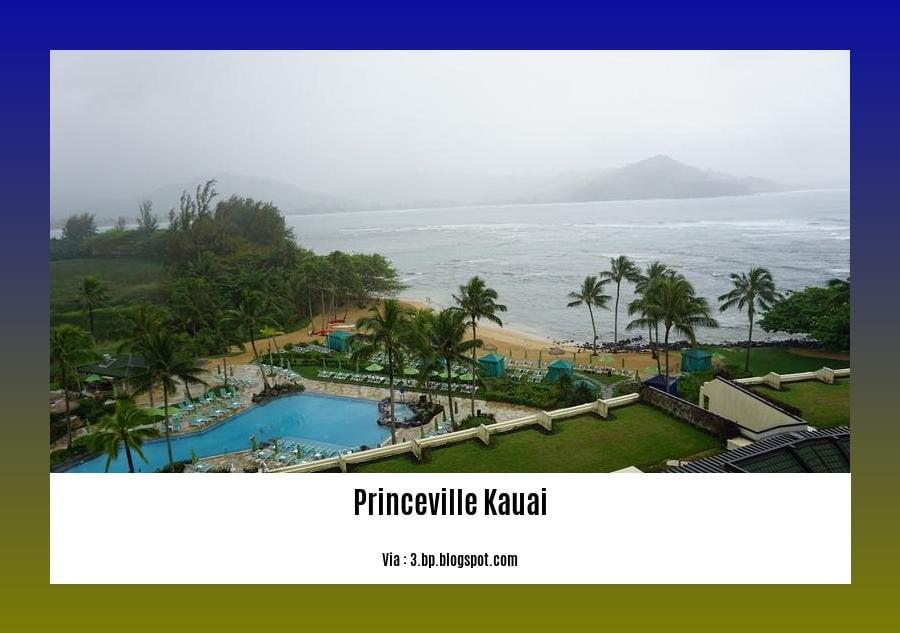
Princeville, located on the picturesque north shore of the island of Kauai in Hawaii, has a fascinating history that spans centuries. From its indigenous roots to its colonial influences and socio-economic development, Princeville has evolved into a renowned tourist destination with a rich cultural heritage. In this article, we will delve into the captivating history of Princeville, exploring its origins, influences, and notable landmarks.
Indigenous Roots: Preserving Culture and Traditions
Before Princeville became a thriving community, the land was inhabited by Native Hawaiians who cherished the fertile soil and lush landscapes. They cultivated taro, sweet potatoes, and other staple crops, flourishing under the island’s bountiful resources. Their deep connection to the land and the sea formed the foundation of their culture and traditions, which are still celebrated today.
Arrival of the Europeans: From Coffee Plantation to Cattle Ranch
In the mid-19th century, European settlers arrived in Kauai, bringing with them new agricultural practices. Princeville was initially established as a coffee plantation, but due to various challenges, including pests and market fluctuations, it transitioned to growing sugarcane. The arrival of sugarcane cultivation brought significant changes to the landscape and economy of Princeville, leading to its transformation into a thriving community.
The Birth of Princeville: A Royal Connection
In 1853, Robert Crichton Wyllie, a prominent figure in Kauai’s history, founded Princeville Ranch. This ranch, the oldest on Kauai, played a crucial role in the region’s economic growth. Its verdant pastures attracted attention from Hawaiian royalty, including King Kamehameha IV, Queen Emma, and their young son, Prince Albert. Inspired by the beauty of the ranch, they named it Princeville during their visit, forever etching their royal connection into the fabric of its history.
Economic and Cultural Influence: Sugarcane and Beyond
Sugarcane cultivation became the backbone of Princeville’s economy, attracting immigrants from various countries to work on the plantations. Their diverse cultural backgrounds and labor shaped the community, leaving a lasting impact seen in the rich cultural heritage of Princeville. Despite the eventual decline of the sugarcane industry, the stories and experiences of those who toiled the land continue to be preserved and celebrated.
A Tropical Paradise: Tourist Attractions and Natural Beauty
Today, Princeville is renowned as a premier tourist destination, allowing visitors to immerse themselves in its rich history and breathtaking natural beauty. From the stunning beaches to the lush greenery of the Hanalei Valley, Princeville offers a myriad of attractions that captivate the senses. Whether it’s exploring the historic sites, embarking on hiking trails, or simply indulging in the local cuisine, Princeville holds something for everyone.
Conclusion:
The history of Princeville Kauai is a tapestry woven with indigenous roots, colonial influences, and cultural heritage. From its humble beginnings as a coffee plantation to its transformation into a flourishing community, Princeville’s journey reflects the resilience and spirit of its people. Today, it stands as a testament to the beauty of the Hawaiian islands and the preservation of its rich history. So, come and explore the captivating history of Princeville Kauai, where the past and present intertwine in a tropical paradise.
Did you know that Hamilton Island has a fascinating history? Discover the captivating history of Hamilton Island by clicking here.
Explore the rich heritage of Swanscombe Kent by clicking here. Get ready to be amazed!
Socio-economic Development and Transformation over Time
Key Takeaways:
– The history of Princeville on Kauai showcases a remarkable journey of socio-economic development and transformation.
– From its origins as a thriving Native Hawaiian community to its transition into a cattle ranch and eventually a premier visitor destination, Princeville has witnessed significant changes over the years.
Princeville, on Kauai’s north shore, is a place steeped in history, with a story that spans centuries. Indigenous Hawaiians inhabited the land long before European settlers arrived, cultivating crops and forging a deep connection with the land and sea. Their sustainable way of life relied on farming, fishing, and wayfinding.
In 1853, Princeville got its name when it was acquired by Robert Crichton Wyllie, a Scottish adventurer and former Minister of Foreign Affairs of the Hawaiian Kingdom. Under his influence, Princeville began to transform. At first, it became a cattle ranch, with expansive pasture lands and over 700 acres of kalo (taro) fields.
However, it was in the 1970s that Princeville witnessed a remarkable shift in its socio-economic landscape. Princeville at Hanalei Resort was established, and it quickly became Kauai’s premier visitor destination, enchanting visitors with its breathtaking natural beauty and grandeur. The resort now stands as a testament to the transformation of Princeville into a thriving hub of tourism and economic activity.
Throughout its history, Princeville has seen the rise and fall of different industries. European settlers initially established a coffee plantation in the area, but due to challenges, it later transitioned to sugarcane. Sugarcane cultivation became the backbone of Princeville’s economy, attracting immigrants from diverse cultural backgrounds to work on the plantations.
Although the sugarcane industry eventually declined, the cultural heritage of those who worked on the plantations is celebrated and preserved. Princeville’s history showcases the resilience and spirit of its people, emphasizing the importance of preserving the cultural and historical legacy of the Hawaiian islands.
Overall, the history of Princeville reflects a captivating tale of socio-economic development and transformation over time. From its indigenous roots to its current status as a renowned tourist destination, Princeville has undergone significant changes, leaving a legacy that continues to shape the identity and character of this remarkable place.
Sources:
– Hawaii Life – The History of Princeville at Hanalei
– Princeville Ranch – Princeville History
Noteworthy Landmarks and Cultural Attractions
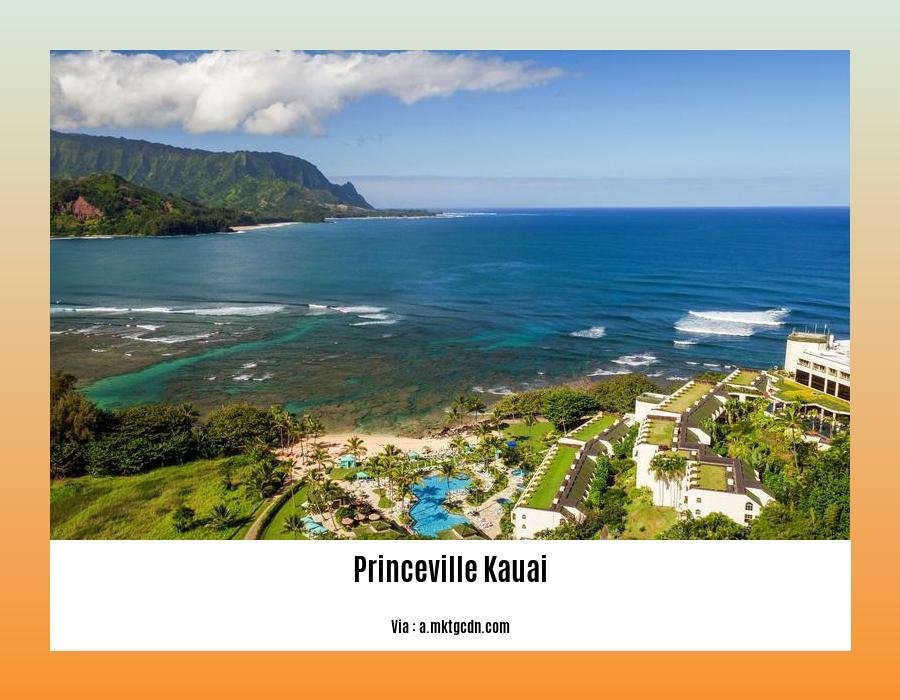
The history of Princeville, Kauai is intertwined with its remarkable landmarks and cultural attractions. From ancient Hawaiian sites to modern tourist destinations, these notable places offer a glimpse into the island’s rich heritage and captivating beauty.
Exploring the Roots: Indigenous Cultural Sites
Princeville, located on the enchanting north shore of Kauai, holds deep indigenous roots. Before the arrival of European settlers, the land was inhabited by Native Hawaiians who had a profound connection to the land and sea. They cultivated crops, engaged in fishing, and practiced traditional wayfinding. Today, the spirit of their culture lives on through various cultural sites in Princeville, serving as a testament to their enduring legacy.
Princeville Botanical Gardens: Nature’s Living Museum
One of the noteworthy landmarks in Princeville is the Princeville Botanical Gardens. As you wander through its lush greenery, you’ll discover an extraordinary collection of native Hawaiian flora and tropical plants. This living museum offers a chance to connect with the island’s natural beauty and learn about its diverse plant species. Stroll along the well-maintained paths, revel in the vibrant colors, and discover the stories behind the botanical wonders that call Princeville home.
Hanalei Valley Lookout: A Breathtaking Vista
For panoramic views that will leave you in awe, head to the Hanalei Valley Lookout. This scenic spot offers a breathtaking vista of the lush Hanalei Valley, surrounded by misty mountains. As you gaze upon the patchwork of taro fields and the winding Hanalei River, you’ll feel the serenity and tranquility that define the essence of Kauai. Capture the moment or simply bask in the beauty of this iconic landmark that showcases the harmony between nature and human existence.
Pali Ke Kua Beach: A Beach Lover’s Paradise
No visit to Princeville is complete without a stop at Pali Ke Kua Beach. With its golden sands, crystal-clear waters, and dramatic cliffside backdrop, this beach is a true paradise for beach lovers. Here, you can bask in the warm Hawaiian sun, take a refreshing dip in the ocean, or simply unwind while taking in the stunning views. Pali Ke Kua Beach epitomizes the natural beauty that makes Princeville a sought-after destination for both locals and visitors alike.
Key Takeaways:
- Princeville, Kauai is home to numerous noteworthy landmarks and cultural attractions that offer insights into the island’s rich history and captivating beauty.
- The Princeville Botanical Gardens provide a unique opportunity to explore the island’s diverse plant species and learn about its indigenous flora.
- The Hanalei Valley Lookout offers breathtaking panoramic views of the lush valley, taro fields, and the majestic mountains that surround it.
- Pali Ke Kua Beach is a pristine beach paradise, boasting golden sands, clear waters, and a stunning cliffside setting.
Sources:
– Princeville Botanical Gardens
– Hanalei Valley Lookout
– Pali Ke Kua Beach
Citations:
– Princeville Botanical Gardens. (n.d.). Princeville Botanical Gardens. Retrieved from
– Hanalei Valley Lookout. (n.d.). Go Hawaii. Retrieved from
– Pali Ke Kua Beach. (n.d.). To-Hawaii. Retrieved from https://www.to-hawaii.com/kauai/beaches/palikekuabeach.php
Present-day significance and preservation efforts
In the captivating history of Princeville, Kauai, its present-day significance and preservation efforts hold a crucial place. Today, Princeville has evolved into a premier visitor destination, renowned for its breathtaking natural beauty, historic sites, hiking trails, and local cuisine. However, it is not just its modern appeal that makes Princeville special; it is the ongoing commitment to honoring its origins and preserving its rich heritage that truly sets it apart.
Key Takeaways:
- Princeville, situated on the north shore of Kauai, is known for its stunning cliffside views overlooking the Pacific Ocean.
- It is named in honor of Prince Albert Kamehameha, the son of King Kamehameha IV and Queen Emma, reflecting the legacy and importance of Hawaiian royalty.
- Princeville’s history dates back centuries before the arrival of Captain James Cook in 1778, with indigenous people engaging in farming, fishing, and navigation.
- In 1853, Robert Crichton Wyllie, a Scottish adventurer and Minister of Foreign Affairs of the Hawaiian Kingdom, acquired the land, shaping the future of Princeville.
- The establishment of Princeville as a cattle ranch in 1895 and the preservation of extensive pasture land and more than 700 acres of kalo (taro) farming in Hanalei Valley showcase the area’s agricultural legacy.
- Today, Princeville is renowned for the Princeville at Hanalei Resort, which solidifies its position as a premier visitor destination on Kauai.
- The combination of cultural heritage, natural beauty, and peaceful surroundings makes Princeville a truly special place.
- Princeville embraces and celebrates its history, preserving and honoring the traditions and stories of its past.
In recognizing the present-day significance of Princeville and its efforts towards preservation, it becomes clear that the community holds a deep appreciation for its cultural heritage. The dedication to maintaining open pasture lands and kalo farming not only preserves the natural landscape but also carries forward an agricultural legacy that has played a vital role in the region’s history. The Princeville at Hanalei Resort contributes to the area’s economy while providing visitors with an opportunity to experience the unique beauty and charm of Princeville.
Beyond the physical features, Princeville’s present-day significance lies in its ability to captivate visitors with its rich history and distinctive ambiance. The stories of the indigenous people, the influence of European settlers, and the legacy of Hawaiian royalty are all woven into the fabric of Princeville’s identity. Through the preservation of landmarks, traditions, and cultural celebrations, Princeville ensures that its past remains alive and thriving.
As visitors explore Princeville, they can immerse themselves in the enchanting narratives that unfold at every turn. Recognizing the importance of heritage, the community invites visitors to learn about the fascinating history while experiencing the natural beauty and tranquility that defines Princeville. From the awe-inspiring views of the Pacific Ocean to the vibrant cultural events, every aspect of Princeville echoes its historical significance and is safeguarded for generations to come.
So, whether it is walking through the lush green fields of Hanalei Valley, basking in the ambiance of Princeville Ranch, or indulging in the local flavors and traditions, one cannot help but be touched by the present-day significance and preservation efforts of Princeville. It is a testament to the resilience and spirit of its people, the allure of the Hawaiian islands, and the deep-rooted desire to honor and cherish the past.
Sources:
FAQ
Q1: What is the significance of Princeville in the history of Kauai?
A1: Princeville holds great importance in the history of Kauai as it was named after Prince Albert Kamehameha, son of King Kamehameha IV and Queen Emma, in 1860. It has undergone various transformations over the years, from a coffee plantation to sugarcane cultivation and eventually a cattle ranch. Today, it remains a premier visitor destination known for its natural beauty and grandeur.
Q2: How did Princeville get its name?
A2: Princeville was named after Prince Albert Kamehameha, the son of King Kamehameha IV and Queen Emma, during their visit to the area in 1860. The name was chosen as a tribute to the young prince, signifying the royal connection and adding to the significance of the place in Hawaiian history.
Q3: What historical events shaped the development of Princeville?
A3: One significant event in Princeville’s history was the acquisition of the land by Robert Crichton Wyllie in 1853. Wyllie, the Minister of Foreign Affairs of the Hawaiian Kingdom, played a crucial role in shaping the future of the area. His establishment of Princeville as a cattle ranch in 1895 marked another turning point, leading to its development as a thriving community and tourist destination.
Q4: How has Princeville evolved over time?
A4: Princeville has evolved from its origins as a coffee plantation to sugarcane cultivation and eventually a cattle ranch. It has retained hundreds of acres of open pasture land and over 700 acres of kalo (taro) fields. In the 1970s, the Princeville at Hanalei Resort was established, solidifying Princeville’s position as Kaua’i’s premier visitor destination.
Q5: What are some popular attractions in Princeville?
A5: Princeville offers a range of attractions for visitors to enjoy. Some popular landmarks include Princeville Botanical Gardens, Hanalei Valley Lookout, and Pali Ke Kua Beach. Visitors can also experience the natural beauty of the area, with stunning views of the Pacific Ocean and opportunities for outdoor dining.
- Unveiling Bernhard Caesar Einstein’s Scientific Achievements: A Legacy in Engineering - July 15, 2025
- Uncover who is Jerry McSorley: CEO, Family Man, Business Success Story - July 15, 2025
- Discover Bernhard Caesar Einstein’s Scientific Contributions: Unveiling a Legacy Beyond Einstein - July 15, 2025
